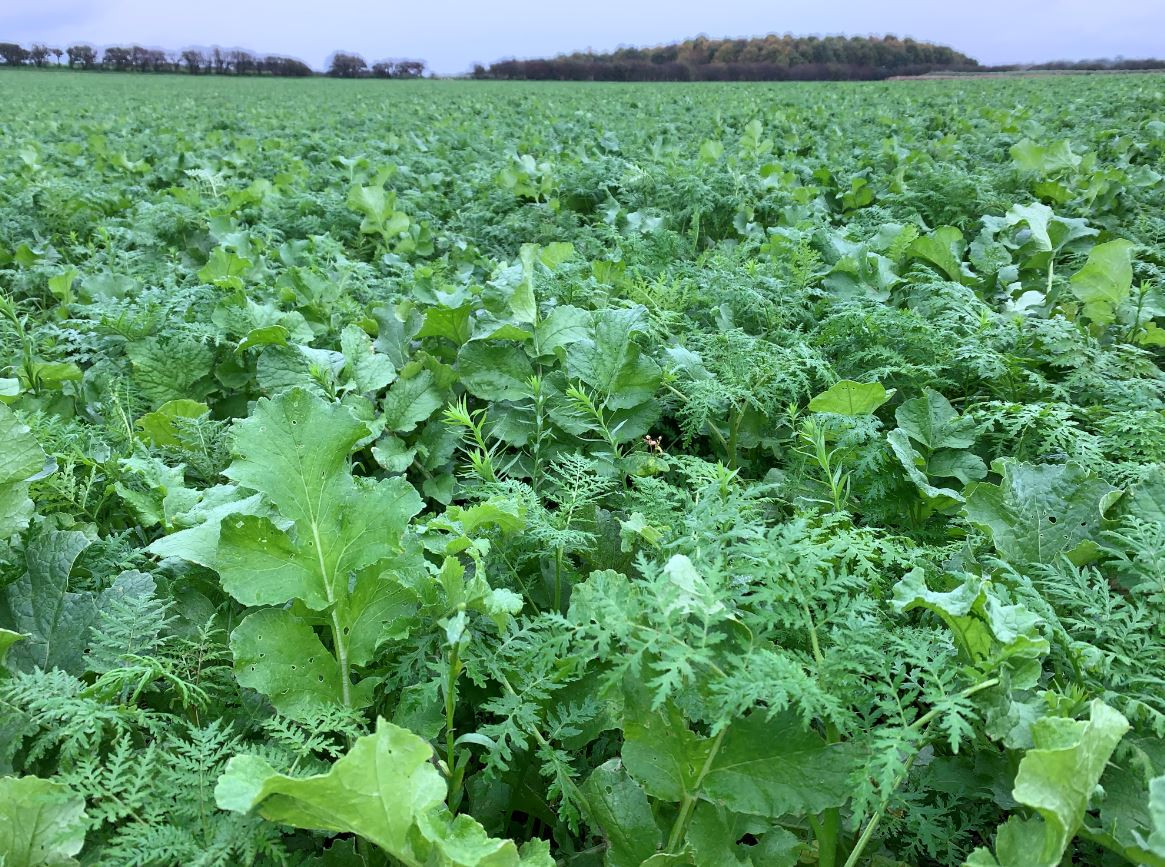The benefits of cover crop destruction within ELMs
February - the month for late snowfall, frosts and in some areas welcome rainfall. Wherever you are in the UK, there will be different challenges as the days lengthen. Some of those challenges are 'the office jobs' you thought you had plenty of time for but now you have more daylight, there is the temptation to shelve those tasks and get on the field. Countryside Stewardship (CS) and Environmental Land Management scheme (ELMs) application windows also open around this time, adding even greater temptation to park those jobs.
The importance of soil health
If you are in a CS agreement or have recently signed up for a Sustainable Farming Incentive (SFI) agreement, you'll know there is a common denominator running through these schemes - soil health.
Not only is soil the backbone of profitable, sustainable agriculture, it also features prominently within the SFI package recently offered to producers.
There are of course varied forms of stewardship funding which will help individual businesses in different ways. The reduction in Basic Payment Scheme (BPS) payments over the next few years has seen many farmers look for alternative sources of income to buffer the loss of this payment. Whilst stewardship and environmental payments are not a panacea for the loss of the BPS support, it is certainly a way of feathering the transition to whatever the future holds for farm support.
Cover crops and green manure aren't new
As mentioned, the theme of soil health runs through most agricultural commentary – it's not new. Green manure has been used since British agriculturalist, Charles Townshend, advocated the Norfolk four-course rotation in the 18th century. The businesses you run will, in one way or another, involve the use of cover crops or green manures. Whether you plant short- or medium-term species, cover crops are now globally recognised as being beneficial to soil health and farm productivity. More about the role they have on farm will be covered in an upcoming blog. Subscribe to our blog here.
Wherever you are on your cover crop journey, one certainty is that a well-established cover crop will eventually reach the stage of needing to be destroyed before planting the next crop. This requires some considered thought to ensure you take the best approach for the season ahead.
Tips for destruction
Whether it's for sheep or cattle, the qualities delivered by a good cover crop are well noted. Crops of high biomass boost productivity thanks to their enhanced amounts of energy, starch and dry matter - all important when integrating into a mixed farming system. If you are grazing, you need to be careful not to poach and compact the soil. You should remove stock during periods of wet weather to help avoid this. Grazing early also brings maximum benefits.
2. Mechanical destruction
The three main methods are ploughing, topping (flailing) and rolling. More experienced growers may well have been out in temperatures as low as -13 degrees rolling radish-based mixtures in the early hours of the morning with great success, leaving grassweeds and some broad-leaved weeds to be managed with glyphosate. If you're direct drilling, always roll with the direction of the drill to prevent blockage and hair pinning of the seed on top of the cover crop.
3. Chemical destruction
This will involve glyphosate in some form. As well as controlling any weeds, it will also kill the cover crop off. This prevents self-setting and the need for additional (and often expensive) control measures in the following crop.
I always advise growers to maintain rates of active ingredient. A big, healthy cover crop will need at least 1,500g of glyphosate per hectare so cutting rates is likely to be counter-intuitive. The use of glyphosate mixed with 24-D can be effective against large broadleaf weed species within cover crops, including clover.
As with any inputs, be sure to pay attention to following crop restrictions after application of the products I've mentioned.
4. When is the best time to remove the cover crop?
If grazing, go early. As we saw in December, Mother Nature is in charge and the very low temperatures meant some cover crops were partly desiccated which in turn removes many grazing qualities.
Radish-based mixes will tolerate temperatures of -5 down to -8 but temperatures as low as -12 have a huge effect on cover crops and their longevity. On heavy land, cover crops should've been destroyed by now. They would have done their job by the beginning of February and this gives you the flexibility to get on with cultivations or drilling, if conditions allow.
Leaving a cover crop too long can have knock-on effects into the spring and the subsequent following crop. A big woody cover crop which is bursting into flower will contain large amounts of lignin which are slow to break down, inhibiting nitrogen availability for the following crop. This may result in a yield penalty in crops such as spring cereals.
Conversely, a slower break down of the cover crop and a later release of nitrogen can benefit crops like maize and sugar beet. At Kings, we have a raft of cut down data showing us which nutrients are held in a wide range of crops and this helps us to give the best advice for our customers.
Summary
No matter the stage you are at with cover crops, never stop seeking advice. No two years are the same, as I'm sure you know! My suggestion is always to observe, learn and adapt. The more you speak with others to share ideas and gain knowledge, the better your understanding will be.
For more information and guidance, contact a member of the Kings team or a Frontier agronomist. Alternatively, you can get in touch.
As a subscriber, you’ll receive email alerts each time a new blog is published so you can always stay updated with the latest advice and insights from our experts







Comments